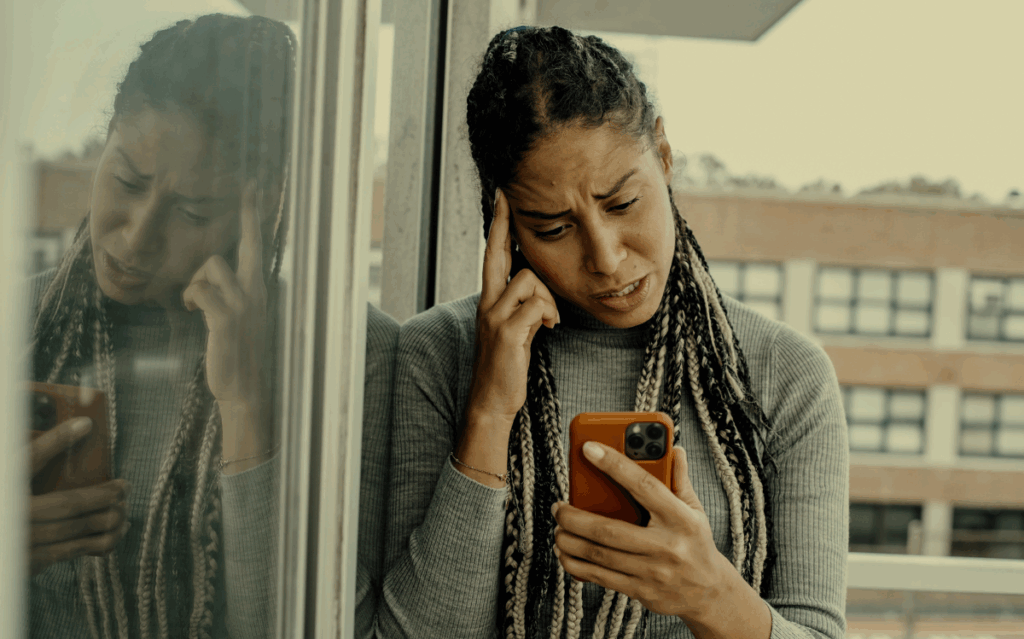Phones buzz all over California, but not everyone can pay the bill. If your income’s low, say, under $21,870 a year for one person, or you’re in Medi-Cal or SNAP, California LifeLine can cut your phone costs, sometimes to zero. [1]
If your boss makes you use your phone for work, the law (Labor Code 2802) says they have to pay you back. To get LifeLine, fill out a form online or call. For work, keep your bills and talk to your boss. Don’t wait, phones aren’t just for fun anymore, they’re how people work, find help, and stay in touch.
Key Takeaway
- The California LifeLine Program offers discounts and free phones to low-income residents.
- Employers must reimburse employees for work-related phone expenses under California labor laws.
- Specific groups, like foster youth and military families, have tailored phone benefit options.
California LifeLine Program
Program Overview
Most people in California just grab their phone and call, but for some, every minute costs. The California LifeLine program tries to take the edge off. If you qualify, you can get up to $19 off your monthly bill, doesn’t matter if it’s a cell or a landline. There’s also a one-time cut, up to $39, when you first sign up. You don’t get to double dip, though. Only one line per house gets the deal, so you’ve got to pick which phone matters more.
If you use TTY, or you’re Deaf or Disabled, there’s a little more on the table. You might get a second line at a lower price, just so you can stay in touch.
Eligibility Requirements
Getting approved isn’t a sure thing. Your household income has to sit at or below 135% of the Federal Poverty Guidelines. That’s not much. If you’re already on something like Medicaid, SNAP, or SSI, you’re probably in. But you have to prove it, benefits letter, Medi-Cal ID, EBT card, something official.
And the paperwork has to be fresh. Old stuff won’t work. If your documents are out of date or missing, you’ll probably get turned down. The rules are tight, but that’s how they keep the help for people who actually need it. If you think you fit, check the latest numbers and get your documents ready before you try.
Application Process
Most people think signing up for help should be easy, but it’s never just a walk in the park. First, you have to go through a company that’s approved, AirTalk Wireless is one, but there are others.
They’ll want to see three things: who you are (like a driver’s license), where you live (usually a utility bill), and something that proves you’re on a program like Medi-Cal or SNAP [2]. If you send in old paperwork or forget something, you’re just asking for a headache.
A lot of folks try to rush it, but that’s how mistakes happen. Sending in two applications from the same address? That’ll get you flagged. Wrong documents? That’s just wasted time. Once you finally get it right, you wait. Could be two weeks, sometimes more. No one’s in a hurry on the other end.
If you get the green light, your bill drops. If not, you’re back to square one.
Program Restrictions and Enforcement
There’s always someone who thinks they can outsmart the system. Doesn’t work here. Only one discount per household, period. Doesn’t matter if you have a cell phone and a landline, pick one. Try to double dip and you could lose everything, maybe even get a fine, and nobody wants legal trouble over a phone bill.
After the Affordable Connectivity Program ended in 2024, LifeLine became the main game in town for phone help. The rules got tighter. They check every detail now, no shortcuts. If you want the discount, just follow the rules, keep your paperwork up to date, and don’t try anything clever. It’s not worth the risk.
Work-Related Phone Expense Reimbursement
Legal Requirement Under Labor Code Section 2802
Under California Labor Code Section 2802, employers are required to reimburse employees for work-related expenses, including phone use. If you’re using your personal phone for calls, emails, texts, or even just to access work-related apps or data, your employer needs to cover a portion of those costs.
This law applies to a wide range of workers, both exempt and nonexempt employees, whether they’re working remotely, part-time, or out in the field. The law is clear: if your phone is being used for work, you’re entitled to get reimbursed for it.
Covered Employees
Both exempt and nonexempt employees are covered by this rule. So, whether you’re sitting in an office or working from home, if you’re using your personal phone to handle work calls, emails, or texts, you should get some compensation.
Remote workers, part-time staff, and even field employees are included in this law. As long as you’re using your phone for work, you can request reimbursement for the costs.
Requesting Reimbursement
To get reimbursed, you need to keep accurate records. This means having a log of calls, data usage, and work-related communications that were made on your personal phone. You can’t just say “Hey, my phone’s been blowing up for work”, you need proof.
Once you’ve got that, you’ll need to submit a written request to your employer, along with the supporting details. If your employer denies or drags their feet on this, you’ve got a couple of options. First, try to work it out directly with them. If that doesn’t get results, you can file a complaint with the California Labor Commissioner.
Legal Remedies for Noncompliance
If an employer refuses to reimburse you, or if they drag their feet in a way that’s unreasonable, you have legal options. You can file a complaint with the California Labor Commissioner, who handles these types of claims.
If the situation doesn’t improve, it might be time to get legal counsel, an attorney specializing in employment law can help. You shouldn’t have to carry the financial burden of work-related phone costs when it’s the employer’s responsibility to pay up.
Special Eligibility Situations

Foster Youth and Former Dependents
If you were in foster care or are a former dependent, you might have been able to get a free phone from California LifeLine. However, the rules are changing, and as of 2024, youth aged 21 to 26 who age out of the system no longer qualify for LifeLine assistance.
For those who still need help, alternative service options are out there. A number of providers are working with former foster youth to ensure they don’t fall through the cracks, and it’s worth reaching out to your service provider to see what options are available.
Military Families and Veterans
Active-duty military families and veterans are also eligible for phone benefits through the California LifeLine program. To qualify, service members need to prove their active duty or reserve status.
For veterans, services can be accessed through County Veterans Service Offices, where they can help navigate the process and get connected with the right discounts.
Shared Household Scenarios
What if you live with a roommate, a domestic partner, or extended family? Well, in California, only one LifeLine benefit per primary residence is allowed. So, even if everyone in the household qualifies, only one person can sign up for the discount.
This can be tricky for some families or shared living situations, but it’s the rule. The program doesn’t allow multiple discounts in one place, even if multiple people meet the eligibility requirements.
Verifying and Maintaining Eligibility
Acceptable Proof Documents
To keep your LifeLine benefits, you’ll need to submit the right documentation. Commonly accepted documents include recent tax returns, pay stubs, or any official benefits ID cards (such as Medi-Cal or SNAP cards). If you’re not sure what’s acceptable, your LifeLine provider can give you some guidelines.
You’ll also need to provide an up-to-date mailing address for verification. You can’t just send in old paperwork and hope it gets approved, this is about proving that you’re still eligible every year.
Common Application Issues
A few things tend to trip people up in the application process. First off, submitting outdated or incorrect documents is one of the most common mistakes. Make sure you’re using the most current proof of income or assistance.
Also, make sure you’re not accidentally submitting multiple applications from the same address. That can create delays or, worse, get you booted out of the program altogether.
How to Fix or Appeal Denied Applications
If your application gets denied, don’t panic. The first step is to contact the California LifeLine Administrator. They can help you identify what went wrong, whether it’s missing information or incorrect documentation.
Once you know what the issue is, you can reapply with the corrected materials. It might take a little extra time, but the key is to get it right the second time.
Related Workplace and Public Benefits
Break Time and Phone Use Policies
California labor law entitles workers to uninterrupted access during lactation and meal breaks. If you need to make a call during your break, your employer must let you do so without interruption. This is part of the reasonable accommodation requirements for workers.
Phone Benefits for Civil and Emergency Workers
If you work in civil or emergency services, like the Civil Air Patrol or emergency response teams, you might also be eligible for specific phone benefits. These workers have access to specialized programs that support their communication needs during emergency and public service activities.
CalWORKs and Communication Access
For those receiving cash aid through CalWORKs or the Department of Public Social Services (DPSS), there are additional phone benefits available. This can include expedited services, which might help you get connected more quickly to the LifeLine program.
Extended Use Cases and Situational Eligibility
Self-Employed and Gig Workers
If you’re self-employed or a gig worker, you may still qualify for California LifeLine benefits, but you’ll need to show proof of your income or participation in public assistance programs. Be prepared to submit documentation that proves your eligibility, like tax returns or proof of benefits.
Life Events That Affect Eligibility
Life can change in a flash, and certain events can alter your eligibility for phone benefits. Job loss, a new disability diagnosis, or military deployment are just some of the situations that might change your status.
If you experience a life event that impacts your eligibility, be sure to update your application as soon as possible. These changes are time-sensitive, and waiting too long can leave you without the benefits you rely on.
Business Owners and Virtual Numbers
If you’re a business owner and you’ve got a California phone number, whether it’s virtual or not, it can give you some extra credibility. However, the rules for LifeLine are clear: personal and business lines can’t always be covered separately.
Be sure to check with your provider to see if your business line might qualify for additional coverage.
FAQ
What happens if I accidentally apply for the California LifeLine program more than once from the same address?
If you submit multiple applications for the California LifeLine program from the same address, it may cause issues with your eligibility. The program allows only one discounted service per household, so submitting more than one application could lead to delays, denial, or even penalties. It’s crucial to make sure you only apply once, and use the correct supporting documents to avoid complications.
Can I switch my service provider after being approved for California LifeLine?
Yes, you can switch your service provider after being approved for the California LifeLine program. However, it’s important to remember that you must apply through an authorized LifeLine provider. If you decide to change providers, you’ll need to check if the new provider is approved and continue meeting the program’s eligibility requirements. Make sure your current benefits transfer smoothly.
How does the California LifeLine program affect my ability to get a free smartphone?
The California LifeLine program offers discounts on phone services, but not all providers include free smartphones as part of their offers. If you’re eligible, some providers, such as Cliq Mobile, may provide a free smartphone as part of their LifeLine plans. It’s important to check with your chosen provider to see if they include free smartphones with their service or if you’ll need to bring your own device.
What should I do if I lose my California LifeLine service due to a mistake in my application?
If your California LifeLine service is lost because of an error in your application, you’ll need to contact the California LifeLine Administrator to resolve the issue. Be prepared to provide corrected documentation, such as proof of income or eligibility for a public assistance program. You may need to reapply with updated information, so keeping your records accurate is essential.
Are there specific rules for how I can use my LifeLine phone for work purposes?
While the California LifeLine program provides discounted phone service, it does not restrict you from using the phone for work purposes. However, if you’re using your personal phone for work-related calls and messages, your employer is required by law to reimburse you for the costs under California Labor Code Section 2802. If you’re using a LifeLine phone for work, keep track of the usage to help clarify any disputes with your employer.
Conclusion
Navigating the California LifeLine program and understanding work-related phone reimbursement might seem complicated at first, but with the right information, the process becomes much clearer. Whether you qualify for a discounted phone service or need reimbursement for using your personal phone for work, there are resources available to help.
Don’t let these opportunities pass you by, apply today to make sure you’re taking full advantage of the benefits you’re entitled to. Ready to get started? Apply for LifeLine here.
References
- https://www.cpuc.ca.gov/consumer-support/financial-assistance-savings-and-discounts/lifeline/california-lifeline-eligibility
- https://www.fns.usda.gov/snap/supplemental-nutrition-assistance-program


